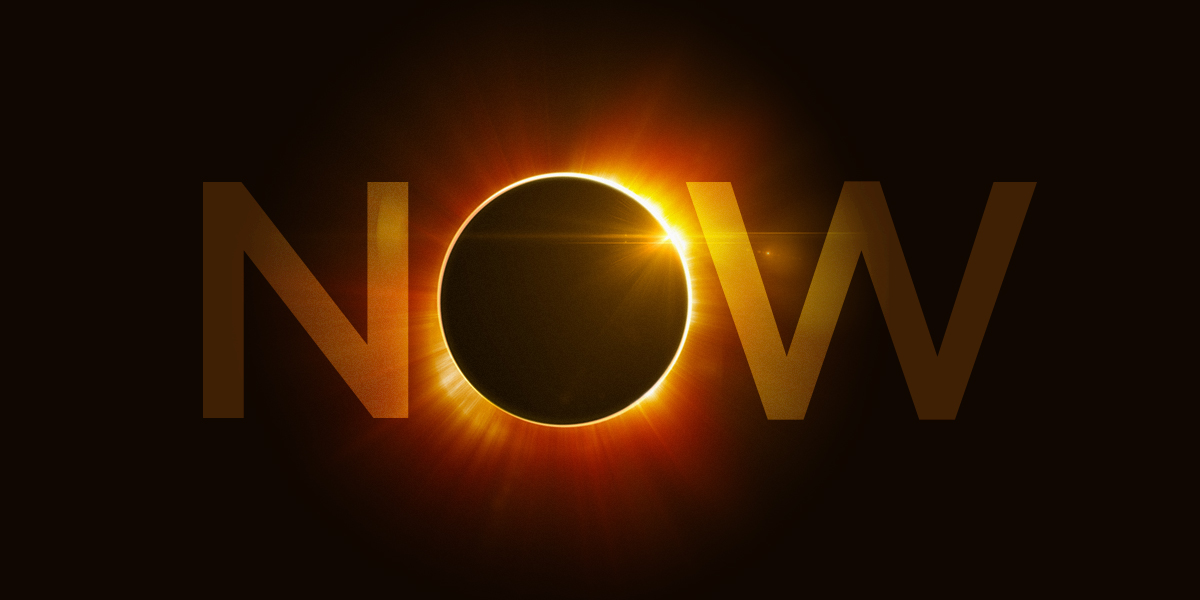How to Make a Pinhole Camera for the Great American Solar Eclipse
You don’t need fancy glasses or equipment to watch one of the sky’s most awesome shows: a solar eclipse. With just a few simple supplies, you can make a pinhole camera that lets you watch a solar eclipse safely and easily from anywhere.
Before you get started, remember: You should never look at the sun directly without equipment that’s specifically designed for looking at the sun. Even using binoculars or a telescope, you could severely damage your eyes or even go blind! Solar eclipses themselves are safe. But looking at anything as bright as the sun is NOT safe without proper protection. And no, sunglasses do NOT count.
Stay safe and still enjoy the sun’s stellar shows by creating your very own pinhole camera. It’s easy! Here’s how:
Materials:
• 2 pieces of white card stock
• Aluminum foil
• Tape
• Pin or paper clip
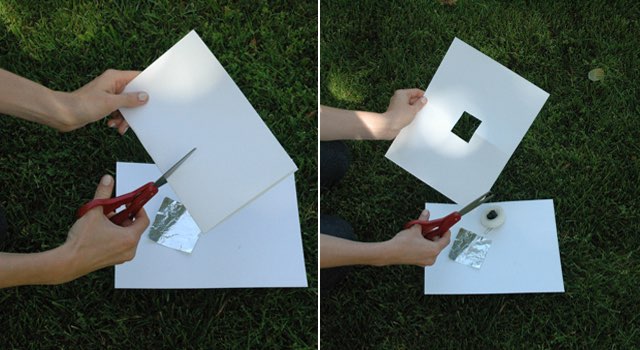
1. Cut a square hole
Cut a square hole into the middle of one of your pieces of card stock.
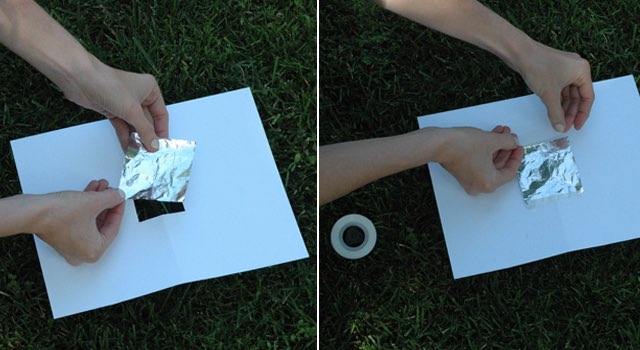
2. Tape foil over the hole
Tape a piece of aluminum foil over the hole.
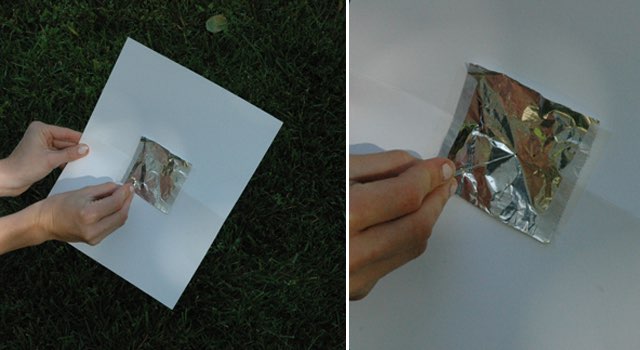
3. Poke a hole in the foil
Use your pin or paper clip to poke a small hole in the aluminum foil.
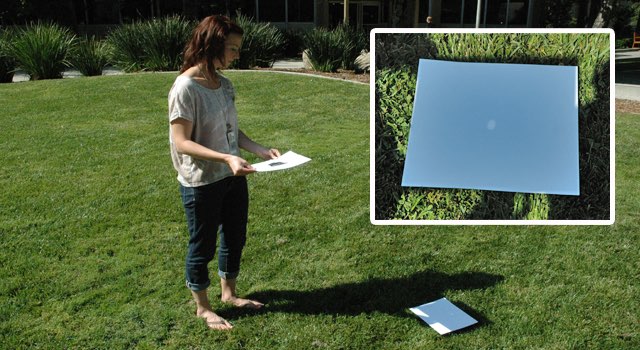
4. Try it out
Place your second piece of card stock on the ground and hold the piece with aluminum foil above it (foil facing up). Stand with the sun behind you and view the projected image on the card stock below! The farther away you hold your camera, the bigger your projected image will be.
To make your projection a bit more defined, try putting the bottom piece of card stock in a shadowed area while you hold the other piece in the sunlight.
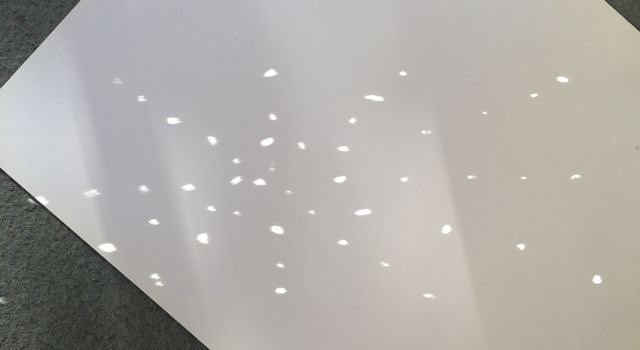
5. Get creative
For extra fun, try poking multiple holes in your foil, making shapes, patterns and other designs. Each hole you create will turn into its own projection of the eclipse, making for some neat effects. Grab a helper to take photos of your designs for a stellar art project you can enjoy even after the eclipse has ended.
Courtesy NASA/JPL-Caltech. Original article can be viewed here.
